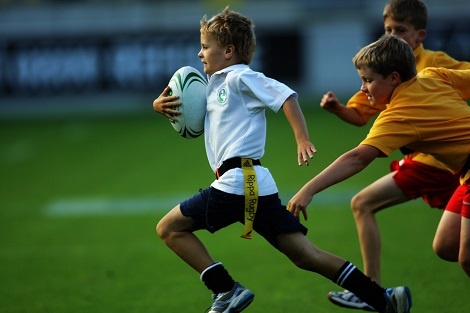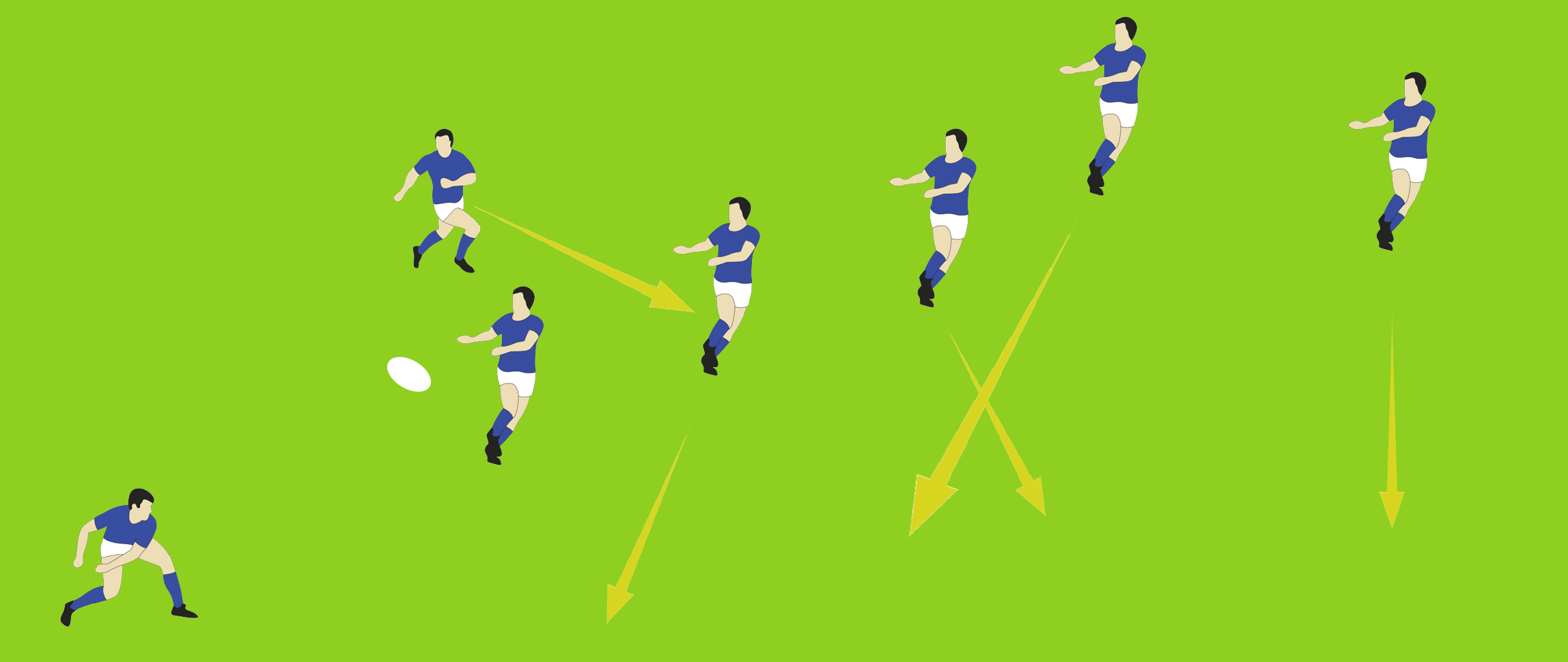- Rugby Toolbox
- Resources & Education
- Learn more
- Articles
- Snook on Coaching
- Skills to Penetrate
- Ruck & Run Drill
- Playing Philosophy – Ruck & Run Coaching Components
- Playing Philosophy – Spread the Forwards
- Playing Philosophy – A forward behind the ruck
- Playing Philosophy – Ruck & Run
- Playing Philosophy – An idea!
- The Breakdown
- Building Positivity [3]
- Building Positivity [2]
- Building Positivity
- Fitness and Game Related Activities
- Getting the Head Working
- Missiles are Dangerous
- Use of Video
- Winger Attacking Outside First-Five
- Player Profiling
- Selection
- Fitness Away from the Team Session
- Playing Philosophy (Pre season Prep)
- Coaching the Coaches
- The Rugby Coordinator and Pre-Season Preparation
- Why Not Use Tap Penalties More Often?
- Why Kick the Ball Down the Middle of the Field?
- Defending the 5 Metre Lineout Drive
- Scoring from the 5 Metre Lineout
- What are the Kicking Team Aiming to Achieve from Halfway Restart
- Should We Practice Scoring Tries?
- Team Culture
- Looking After Your Players
- Coach Survival Tips
- Under 11/13 – Backline Defence
- Under 11/13 – Ruck Defence
- Under 11/13 – Back Attack
- Under 13 – The Counter Attack
- Under 11/13 – The Maul
- Under 11/13 – Lineouts
- Under 11/13 – Decision Making
- Under 11/13 – Support Play
- Under 11/13 – Dive Pass and More
- Under 11/13 – Drop & Grubber Kick /Highball Catch
- Under 11/13 – Front on Tackling
- Under 11/13 – Contact – Getting Up – The Ruck
- Under 11/13 – The Coaching Session
- Under 8/10 – Using Space
- Under 8/10 – Kicking
- Under 8/10 – Contact and Picking Up the Ball
- U8/U10 Draw & Pass and Sidestep
- Under 8/10 – The Tackle
- Under 8/10 – The Coaching Session
- Under 7 – Test Your Coaching – Support Play
- Tap Pass and Swerve U7
- Ball Familiarisation; Passing & Receiving
- Activities for the Non-Contact Tackle
- Under 7 – The Coaching Session
- Coaching Teenagers – After the Ruck
- Coaching Teenagers – The Practice Session
- Coaching Teenagers – Best Practice
- Coaching Kids – Best Practice
- Plays from a Tap Penalty
- Running Plays from a 5 Man Lineout
- Driving Plays from a 5 Man Lineout
- Strike Plays at the End of the Lineout
- Back Strike Plays at the Lineout
- Wide Strike at the Scrum (2)
- Wide Strike at the Scrum
- Midfield Attack at the Scrum
- No 8 Plays at the Scrum (2)
- No 8 Plays at the Scrum
- The Cut Out Pass
- Skills to Penetrate (2)
- Skills to Penetrate
- Movements to Penetrate
- Patterns to Penetrate
- Contact and Continuity
- Keeping the Ball Alive Out Wide
- Pre Season Support Activities
- Checklist
- Understanding the game
- The Playing Philosophy
- The Lineout
- Overview
- Team Profile
- Start Now!
- Backrow
- Nine and Ten
- Rugby-related Fitness Activities
- The Psychological Edge
- Open Field Play
- Key Performance Indicators
- Improving Team Performance
- Backline Attack Concepts
- Tactics at Phase Play
- Playing Philosophy
- The ‘Stop Focus’
- Kick Attack
- Clearing the 22
- Wide Attack at Phase
- Player Focus
- Scrum Preparation
- Lineout Preparation
- Back Attack Preparation
- Sevens Preparation
- Sevens Kick Offs
- Sevens Scrum and Lineout
- Sevens Attack Patterns
- Sevens Defence
- 7's Selection and Game Planning
- Coaching and Leadership
- How the Game Evolves
- Changing Within the Game
- Learning from the Television.
- Using Tap Penalties Wisely
- Defence Drills
- Defence Drills for Tight Five
- Team Defence and TUB’ing
- Establishing Patterns from the Ruck
- Structured Phase Play
- Structuring Phase Play on the Run
- Coaching Roles
- Structuring a Close in Tackling/Defensive Session
- Coaching in Threes
- Attacking Back Play
- Kick Off Chase
- Wrap Around Back Plays
- Lineout Plans
- Looking and Learning
- Motivating Your Players
- Scrum Attack
- Refocusing the Team
- Monitoring the Progress
- Learning the Game
- Playing to the Laws
- Small is OK
- Decisions After the Tackle
- Improving Your Coaching
- Food for Thought
- More Food for Thought
- Passing & Catching
- How Ireland Nearly Beat the All Blacks
- The Progressive Coach
- Try Something New
- Encouraging Excitement
- The Mental Approach
- Where to Start
- Being the Best You Can Be
- Off the Ball Decisions
- Lineouts Difficult to Master
- Decisions on the Run
- Rucking and Rolling
- A Successful Approach
- Gaining Clarity
- Manipulation vs Physicality
- Beating the Drift
- To Ruck or Not to Ruck
- Stopping the Lineout Drive
- Fine Tuning the Planning
- It's a Running Game
- RugbySmart 2015
- Using the Shoulders
- Loosehead Prop / Tighthead Prop
- Position Specific – Hooker
- Position Specific – Lock
- Position Specific – Blindside Flanker
- Position Specific – Openside Flanker
- Position Specific – No 8
- Position Specific – Halfback
- Position Specific – First Five Eighth
- Position Specific – Second Five Eighth
- Position Specific – Centre Three-quarter
- Position Specific – Wing
- Position Specific – Fullback
Skills to Penetrate

In the NZRU Manual 'Developing Rugby Coaches' there is a section on 'Continuity Skills' with part of this section looking at the 'Hit and Spin' and “Offloading in Contact'.
In summary the hit and spin is a skill where the ball carrier makes contact with the defender using their outside shoulder against the outside shoulder of the defender, spins out of the tackle and continues the forward momentum.
The offload is a skill where the tackled player is going to get a pass away to a support player either during the tackle or after they have hit the ground and has no other defender stopping them from making a pass.
An ideal time in the game to utilise these skills is from a set piece where the attacker is often in a 1 v 1 situation. Rather than hit up and set a ruck the aim of the ball carrier will be to either get in behind the tackler or penetrate and continue with the flow of the attack.
So the plan is a simple as just adding either of these two skills on to the end of the play that the team no doubt practice over and over again. One pattern with two or three options is the best way to start.
Assuming the coach is of an attacking mindset they will name the plays as 'Strike Plays' and have some sort of explosive sounding call. As an example we will call the following play “Missile”.

Missile 1: 9 passes to 10 / 10 passes to 11 or 14 behind 12 / 11 or 14 switches with 15 / 15 breaches the inside shoulder of the defender and offloads to a forward on their inside.
Missile 2: 11 or 14 dummy switches with 15 and passes to 13 / 13 hits and spins on the outside shoulder of the defender / 14 or 11 and 10 in support.
Missile 3: 11 or 14 dummy switches and hits and spins or offloads to 13 as he gets on the outside shoulder of the defender / 13 must support with some depth.
Missile 4: Of course the team could set this up by giving 12 the first ball on the burst. And there is nothing stopping him from hitting and spinning or offloading, or setting a quick ruck as the case may be.
From NZ Rugby’s Coaching Manual – Developing Rugby Coaches
Hit and Spin
Objective:
To engage the opponent. To spin off to maintain momentum.
To continue forward movement.
Key Factors
• Focus on the contact area. Spinning to the left – focus on defender’s right shoulder with your left shoulder.
• Eyes open and up.
• Compact body position.
• Ball in two hands. Can shift away from contact (body before ball).
• Small steps on approach.
• Plant front foot close to defender’s feet. Spinning left – left foot near defender’s right foot.
• Target to the side of the defender’s shoulder.
• Contact side-on, with hard parts; spin to the outside of the shoulder contacted maintaining momentum. Maintain balance by keeping feet apart – three big steps (hit-step away-step across - accelerate)
• Once facing forward, burst away.
Coaching Points
• To maintain momentum, the ball-carrier must target one side of the defender (left shoulder of ball-carrier to right side of defender and vice versa), aiming for controlled ricochet off, continuing forward.
Common Errors
• Leading with the ball.
• Contacting the centre of the defender and stopping forward momentum.
• Spinning the wrong way and presenting the ball to the defending team.
Offload in Contact
Objective:
To engage the opposition. To transfer the ball to the support player moving into space.
Key Factors
Pre Contact
• Look to create a weak shoulder, go forward and step into the space.
• Eyes up, chin off chest.
• Compact body position
• Ball in two hands – can shift away from contact (body before ball).
• Small steps, plant front foot close to defender’s foot on his weak shoulder
In Contact
• Maintain a stable base.
• Sight supporter.
• Ball carrier can use a fend (with free arm) to hold off the defender.
• Brace for impact (from defence and support).
• Transfer ball to support after engaging defender in contact
• The ball carrier may still be on his feet or alternatively have driven through and in behind the defender before offloading to his supporting player/s.
• If he is on the ground he should hit the ground, sight his support, then give a pass.
Coaching Points
• Make impact to engage opposition and create space for support player.
• Vital to sight support for accuracy of pass.
• Communication between ball-carrier and support player is essential.
• Passing in contact area can be an effective way of maintaining continuity immediately.
Common Errors
• Ball knocked down by defender during transfer.
• Poor pass under pressure to the supporting player.
• No communication between the ball-carrier and support player. Either visual or verbal.